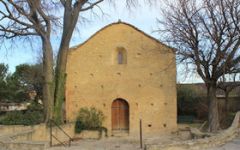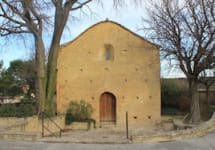Chapelle St. Theodoric Chateauneuf-Du-Pape Le Grand Pin 2011
-
Wine
Spectator -
Robert
Parker



Product Details
Your Rating
Somm Note
Winemaker Notes
Professional Ratings
-
Wine Spectator
A lovely perfume of singed sandalwood, black tea and mulling spice notes surrounds a core of crushed plum, raspberry and blood orange fruit. Shows a briary backdrop on the sneakily long finish. Best from 2015 through 2025. 100 cases imported.
-
Robert Parker's Wine Advocate
Still drinking well, the bricking 2011 Chateauneuf du Pape le Grand Pin shows notes of roasted meat, pine sap and dried cherries. Full-bodied, round and supremely silky in feel, this is deliciously mature and textural, with a delightful bit of licorice on the lengthy finish. Drink up over the next few years. Best after 2015
Other Vintages
2021-
Robert
Parker -
Jeb
Dunnuck
-
Robert
Parker -
Jeb
Dunnuck
-
Robert
Parker -
Jeb
Dunnuck
-
Robert
Parker
-
Jeb
Dunnuck -
Robert
Parker
-
Wine
Spectator -
James
Suckling
-
Robert
Parker



Grenache thrives in any warm, Mediterranean climate where ample sunlight allows its clusters to achieve full phenolic ripeness. While Grenache's birthplace is Spain (there called Garnacha), today it is more recognized as the key player in the red blends of the Southern Rhône, namely Châteauneuf-du-Pape, Côtes du Rhône and its villages. Somm Secret—The Italian island of Sardinia produces bold, rustic, single varietal Grenache (there called Cannonau). California, Washington and Australia have achieved found success with Grenache, both flying solo and in blends.

Famous for its full-bodied, seductive and spicy reds with flavor and aroma characteristics reminiscent of black cherry, baked raspberry, garrigue, olive tapenade, lavender and baking spice, Châteauneuf-du-Pape is the leading sub-appellation of the southern Rhône River Valley. Large pebbles resembling river rocks, called "galets" in French, dominate most of the terrain. The stones hold heat and reflect it back up to the low-lying gobelet-trained vines. Though the galets are typical, they are not prominent in every vineyard. Chateau Rayas is the most obvious deviation with very sandy soil.
According to law, eighteen grape varieties are allowed in Châteauneuf-du-Pape and most wines are blends of some mix of these. For reds, Grenache is the star player with Mourvedre and Syrah coming typically second. Others used include Cinsault, Counoise and occasionally Muscardin, Vaccarèse, Picquepoul Noir and Terret Noir.
Only about 6-7% of wine from Châteauneuf-du-Pape is white wine. Blends and single-varietal bottlings are typically based on the soft and floral Grenache Blanc but Clairette, Bourboulenc and Roussanne are grown with some significance.
The wine of Chateauneuf-du-Pape takes its name from the relocation of the papal court to Avignon. The lore says that after moving in 1309, Pope Clément V (after whom Chateau Pape-Clément in Pessac-Léognan is named) ordered that vines were planted. But it was actually his successor, John XXII, who established the vineyards. The name however, Chateauneuf-du-Pape, translated as "the pope's new castle," didn’t really stick until the 19th century.
